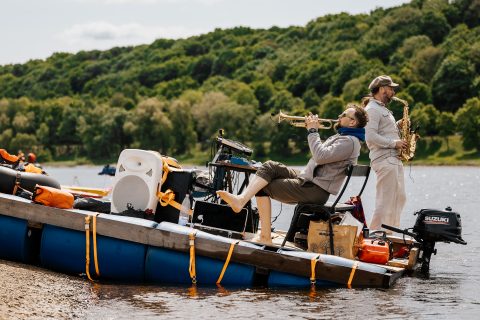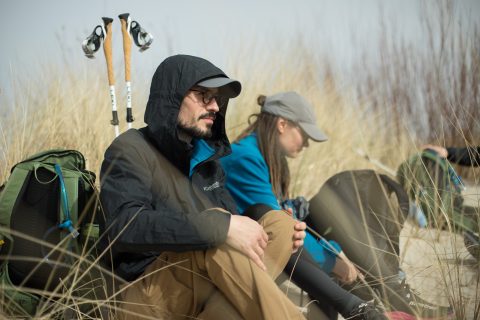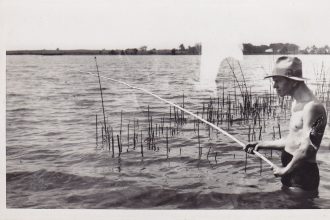Kaunas is a city of basketball, design, small business, industry, many other wonderful things, and among them… rivers. In addition to the two most famous ones, we have many smaller and quite tiny streams, among which is the Girstupis. The only issue is that many Kaunas residents have no clue where the Girstupis is and whether it is not the same as Gričiupis, or when Girstutis shows up in this equation.
Known but forgotten
In addition to the Nemunas and the Neris, the city is also famous for the Nevėžis and the Jiesia. The first marked the historical border between Aukštaitija and Žemaitija, and the second is known for its landscape reserve and the Kaunas area of the same name. However, none of these rivers come close to the historical city center and did not have much importance in the formation of the city.
Although forgotten, the Girstupis is sometimes named as perhaps the most important geographical factor for the urban development of Kaunas, especially for the districts of Naujamiestis and Karmelitai, whose development accelerated in the 19th century. A significant role was played here by the industry that found its way to our land at a similar time and which needed a constant water supply. However, neither it nor its tributary the Gričiupis can be seen now.
In 2020 Kaunas city municipality stated in the urban guidelines of Naujamiestis that one of the main short-term strategic goals is the newly prepared water collection system and the creation of green connections. Perhaps the main way of implementing this is the opening of underground waters, i.e., namely the Girstupis, which crosses a large part of lower Kaunas. The small river would return from the underground world to the urban landscape.
Significance
Perhaps the biggest legacy of the Girstupis and the Gričiupis is the network of streets formed around them. During your daily commute along Taikos or Savanorių avenues, Tvirtovės alėja, Kovo 11-osios, Pašilės, Gričiupio, Studentų, Slėnio, Tunelio, Girstupio, Šiaulių, Karaliaus Mindaugo and other streets, you cross one of the parts of the Girstupis or Gričiupis. The need for water often made valleys near streams the axes around which settlements continued to expand.
I have already written a little about this in Kaunas Full of Culture a few years ago when I discussed the memory of Adomas Mickevičius in Kaunas. The poet has said that the slopes of the Girstupis are the most beautiful place in the world for him. It is said that he hung out there before leaving Kaunas, so he engraved his initials and the date on the memorial stone, which is still standing.

A less known, but also an important fact is that the Girstupis gave the name to Šančiai district. The fortifications on the mouth of the stream were called šancai. Later, this name was Lithuanianized and in the language of the locals, it was adopted by the entire suburb of Kaunas on the banks of the Nemunas meander.
When commemorating the centenary of the Lithuanian Song Festival, it is worth discussing the Valley of Songs, which is known to all Kaunas residents. Although the festival itself started at the other end of Žaliakalnis, it is now associated with this particular place in Oak Park. The Valley of Songs is set up in the Girstupis Valley, on the site of one of the former tributaries.
In addition, Girstupis’ “brother” the Gričiupis gave the name to the eldership of Gričiupis, which is the smallest in Kaunas and perhaps not known to many because of that. The circumstances of its creation are worthy of a separate essay, but in 2005, under the leadership of Arvydas Garbaravičius, the piece cut off from Dainava was given that name.
Girstutis venue – a branch of Kaunas Culture Center today – is also located next to this eldership, right in front of Girstupis Park. It is unclear why the venue was given this name. This is what it was called during the Soviet period. However, the nearby shopping center has written “Girstupis” next to its name.
Many people will also remember the popular Lithuanian film The Children from the Hotel America, the production of which started before the fall of the evil empire. It is the closing of the river that becomes the main metaphor for the silenced society after the self-immolation of Romas Kalanta.
Why are they hidden?
For most modern Kaunas residents, Girstupis is just a shopping center, they have not even heard of any streams. It is not surprising, because only the older residents remember the open basin of this river. I heard more than one story, how in childhood they used to bathe and do laundry in these streams.
According to witnesses, economic matters, although on a larger scale, related to industry, were one of the main reasons that led to the canalization of the Girstupis basin. The interwar press also wrote about the filthy-smelling Girstupis in Karmelitai area. In addition to the sewage of the residents of the surrounding streets, it received the wastewater from I. B. Volfas beer factory, Minerva and Tilmans’ brothers metal factories. However, until the post-war period only the part of the Girstupis that was nearing the station was polluted.
According to contemporaries, these currents were greatly impacted by an artificial fiber factory with an impressive name (The 50th Anniversary of October) built in 1965. As those who have lived here all their lives said, from then on, the stream acquired an increasingly green color, an unpleasant smell appeared, and most importantly, from then on it never froze. It doesn’t freeze even now.
The exact calendar of the Girstupis and the Gričiupis canalization still needs to be drawn up but according to those who saw it with their own eyes, the biggest sewerage works were carried out in 1970–1980. We could consider the culverts – the longest of which stretches as much as 180 meters from Papieriaus St. pump station to the Zoo – installed during the time of the Kaunas fortress, as the beginning of the canalization process. It was formed by radically changing the course of the Gričiupis, moving the confluence of these streams. Instead of culverts for both streams separately, when digging the defensive ditches for the fortification, the Gričiupis stream bed was directed to run through a ditch through the Girstupis culvert. These and other completed and uncompleted works are recorded in archival documents. Curiously, as the construction of the fortress progressed, a project was being prepared, according to which the Girstupis riverbed was to become the road necessary for the functioning of the fortress.
An interesting later phenomenon is the building of garages in the river valleys. We can find these examples near Ramybės quarter, on the side of Rytų Street, on Studentų and Basanavičiaus streets. In the late Soviet era, in the last stages of canalization, people submitted requests for allocating areas near streams on the condition that they would carry out the work themselves. Thus, residents looked at these undeveloped areas of difficult terrain as an opportunity to acquire property and to protect a very expensive item at that time: a car.
So where are they?
A few years ago, when I started to take an interest in the history of my neighbourhood, I spent a lot of time on it, but the ends and beginnings of the Girstupis, the Gričiupis, and the Girstutis are still unclear. The Girstupis is the easiest to describe: its bed has experienced the least human intervention. It is said that its beginning is somewhere around the present-day Kaunas FEZ. It continues near Taikos Avenue, under Urmas, and then turns toward Girstutis venue, and continues, under the garages, toward Oak Park, slowly opening up at the confluence with the Gričiupis near the pumping station on Popieriaus St., shortly popping up in A. Mickevičius Valley then hides again under Tunelio St. and finally flows into the Nemunas near the Viada gas station on Karaliaus Mindaugo Avenue.

Since the stream is hidden underground, it is difficult to say how big it is in its first section in the Dainava district. Based on the 19th-century maps, its water yield and width seem to increase somewhere beyond the new Kaunas Ice Palace. By the way, during its construction, the media reported that one of the main tasks would be to divert the underground channel away from the foundations.
It is usually said that the headwaters of Gričiupis are near the 7th Fort. For some time, I doubted this generally accepted truth, because even now the slopes visible, for example, from Rimvydas Street, were more reminiscent of man-made ditches than valleys. I thought that a mistake had been made in the course of history. Perhaps Gričiupis restaurant (now on Savanorių Avenue) was built in the Soviet period not next to the stream but by the former defensive ditch. However, as I mentioned, in the 19th century part of the Gričiupis valley was tilted, and an embankment was formed nearby.
And why not believe what the Internet says? Because some of the things don’t make sense.
Yet, all this confusion finally ended during the conversations of the last few weeks, and now I can finally say that Gričiupis is not one stream, but simply a set of several streams with the name given to it by the people, with the current Gričiupis eldership having formed around it. Locals, Kaunas fortress enthusiasts, and Rytų Street old-timers confirmed that Gričiupis, in popular terms, is here, there, and everywhere.
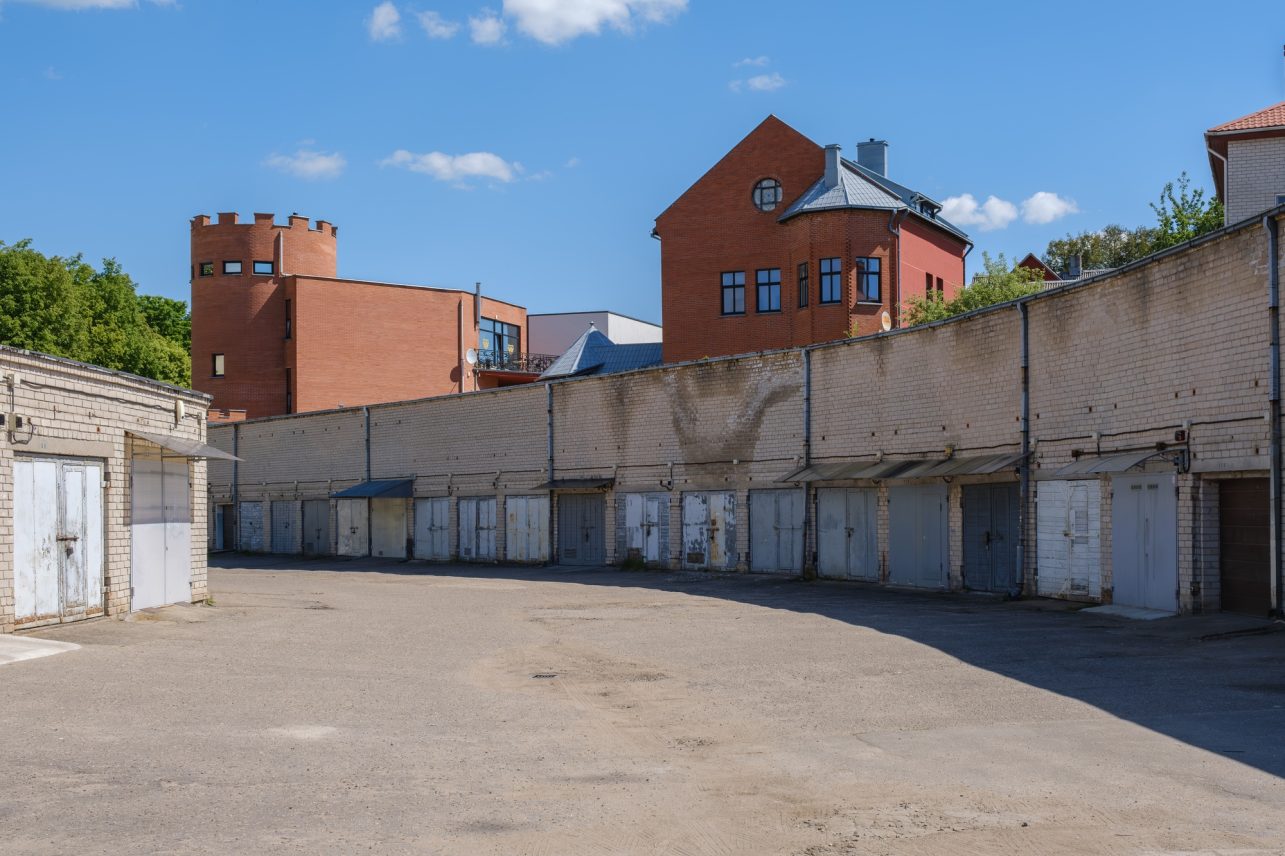
Thus, the Gričiupis, as it formed in the historical memory of the old local residents, is an unofficial network of streams that flowed along the swampy edges of Žaliakalnis. Part of it comes from the back of the 7th Fort, along the edge of the former 7th Fort battery and reformed riverbed next to the curtain wall, the last fragments of which can be seen near the Lirema eye clinic on A. Baranausko Street.
The other part is on Rytų Street, my native one. If you are taking it, it is impossible not to notice the former river valleys running along the sides, showing the stream flowing under your car. According to the residents, not so long ago, just before the end of the Soviet era, a part of this stream flowed freely approximately where the arrays of garages are located on Pietų St. Other local springs, streams, and small ponds were also called by the same name.
The Girstutis though is the biggest mystery. Frankly, in many places, this stream does not even bear this name and remains nameless. However, historian, guide, and researcher of Kaunas Žilvinas Rinkšelis started to call this nameless tributary of the Girstupis, Girstutis in several texts, so I will continue to do so as well. It flows into the Girstupis next to a visible culvert under Radvilėnų Road, right in the valley of A. Mickevičius. However, I am unable to say where its headwaters are.
Environmental situation and changes
It is easy to find articles in the media about the ecological condition of the streams in question. Although there has been no large-scale industry nearby for some time, the ecological condition of these waters is not improving. Almost all the former administrations of the city talked about the solutions to the problem, but no real changes can be seen.
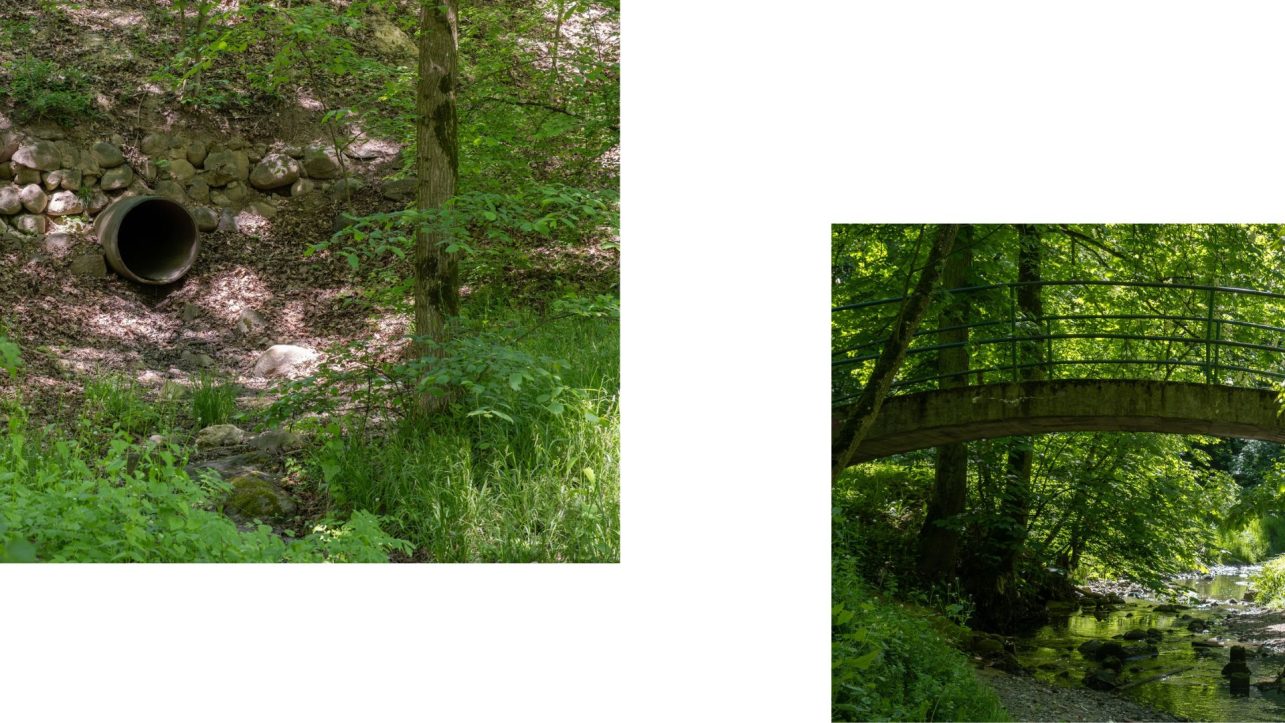
Last year, Kauno diena wrote that environmentalists do not understand why the Girstupis suddenly turned black. In the same article, the subject of our article is demonstratively called a river of sewage and an environmental disgrace. It has been stated more than once that organic pollution, the excess of nitrogen and phosphorus compounds exceeds the permissible norms. It would be interesting to measure the annual pollution, multiply it by half a century and compare it to the Grigeo scandal.
This is where the popular name of these streams came from, which I got to know before the actual one. Every resident of Gričiupis used to go to Gūvnė or Gūvnerka to play. The etymology of these words is probably obvious (from the Slavic word gavno, which means excrement, ed.). Since I managed to fall into the Gričiupis as a kid, I can testify that these names were given to it for a reason.
We are hopeful due to a new campaign, during which residents in the surrounding districts who have water supply but haven’t concluded contracts for domestic sewage, are being inspected. I am also happy about the maintenance work carried out in Girstupis Park, which has been simply called a hole. We hope that the beautiful park of Gričiupis will also experience the same makeover, after all, the project proposals for its maintenance were presented almost a decade ago.

